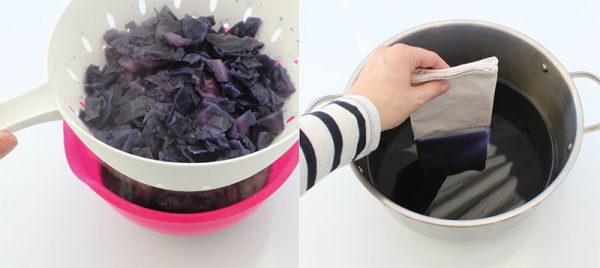The fab Caroline South is the queen of sustainability and is here to show you can make your own DIY napkins. And the best part? They’re naturally dyed using a home-grown colour palette. Be it vegetables fresh from the earth, flowers picked on a countryside stroll, or spices from a kitchen cupboard, nature is full of produce that can be used to create the most beautiful dyes. As they don’t rely on chemicals, using natural ingredients to colour fabric results in the prettiest soft, muted shades. And, by trying this artisanal technique, you’ll be following an age-old tradition, used for thousands of years. We truly love sustainable crafts! Caroline's basic eco-dyeing guide, then experiment with different dye materials to create a set of inexpensive, eco-friendly linen. Once you've made these pretty ombre tea towels use your new eco-dyeing technique to update clothes, bedding or even old linen for furoshiki wrapping. You can also use this eco-dyeing tutorial to do a greener version of tie-dying. Now it's over to Caroline!

Natural dyes
You can use most plants, fruits and spices to create natural dyes, and the final colour will vary depending on both the dye matter and the fabric. Here are a few suggestions, depending on the colour palette you want to achieve:
- Yellow – turmeric, celery leaves.
- Orange/brown – tea and coffee, brown onion, walnuts, marigolds.
- Red/pink – strawberries, cherries, beetroot, hibiscus flowers.
- Green – artichokes, spinach, peppermint leaves, nettles.
- Blue/purple – blackberries, red cabbage, blueberries, black beans.
You will need
- White cotton napkins
- Dye materials (we used black beans (blue), red cabbage (purple), beetroot (pink) and turmeric (yellow))
- White vinegar
- Salt
- Large cooking pot
- Sieve
- Rubber gloves





